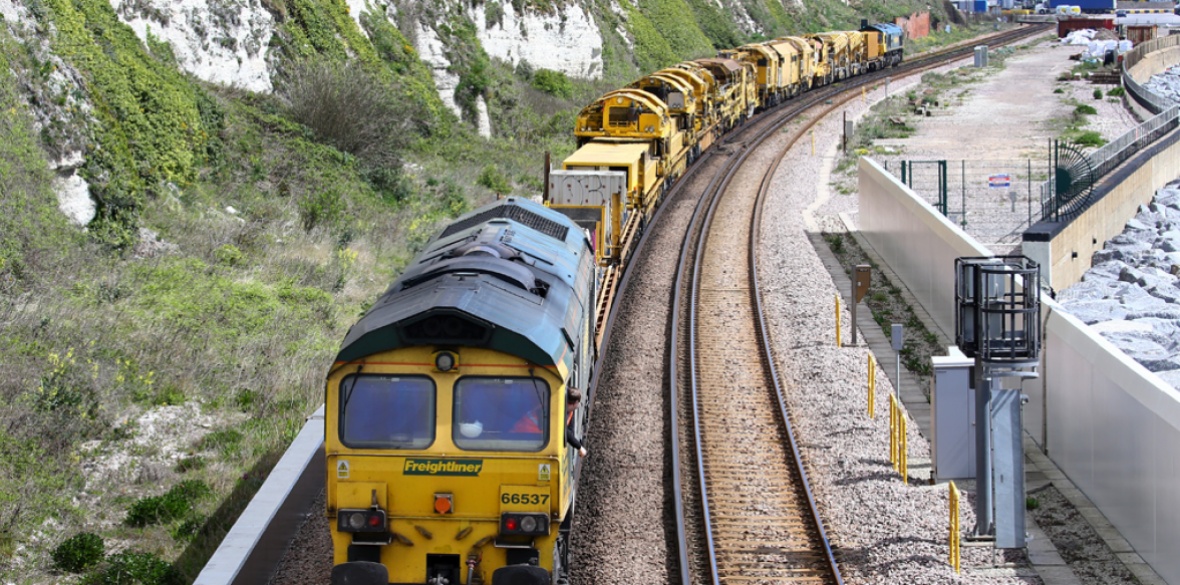This is the last article you can read this month
You can read more article this month
You can read more articles this month
Sorry your limit is up for this month
Reset on:
Please help support the Morning Star by subscribing here
IN THE cut and thrust of political debate around collapsing rail franchises and the near daily disasters conjured up by Chris “Failing” Grayling, it’s easy to overlook the importance of getting it right on the future of freight.
There can be no doubt that the flow of goods in, out and around the country concerns every one of us. There are two main thrusts to this — one hinges on running our railways in the public interest, the other centres on the pressing need to combat CO2 emissions.
A publicly owned and operated national rail network run for people, rather than private profit, is not only our union’s long-standing policy, but a touchstone of the Labour Party and trade union movement under Jeremy Corbyn.
We must go further, though. In the minds of the public at large we have won the debate — it’s now easy to envisage an incoming Labour government moving at speed to nationalise our railways.
Yet these networks have to be joined up in all respects and fit not only for the present but long into the future. In that regard, getting freight off roads and onto rails is paramount.
What’s needed is an increase in capacity on our railways, something which, at a stroke, would move freight away from roads. That can only happen if, as a country, we fully commit ourselves to building major new passenger railways like High Speed 2 (HS2).
For too long opponents have been bunkered in their thinking about the wisdom of HS2 — and we should be long past the point of questioning its worth. The truth is we need more of these projects linking major population centres — and this also means building a high-speed line all the way to Scotland.
Essentially, the advantages of moving freight by rail is that it brings economic, environmental and safety benefits — there’s no end of evidence to support this.
It’s a staggering fact that congestion on our roads costs Britain £30 billion a year. Not only that, according to the latest available figures, we live in the third most congested country in Europe and fourth most congested in the developed world.
It must be noted that transport was the only sector in which carbon dioxide emissions grew between 2012 and 2017 and is responsible for almost 30 per cent of all overall British carbon dioxide emissions.
Something needs to change and thankfully we don’t have to look hard to see that rail freight is a no-brainer. Let’s just consider that the largest freight trains can remove up to 160 heavy goods vehicles (HGV) journeys from the roads and that just one train can carry enough materials to build 30 houses.
Freight by road is failing on its own terms too, with government figures showing that nationally 30 per cent of lorries were driving around totally empty in 2016 and 2017. That’s not what anyone would call sustainable in any sense of the word.
The same government data makes starkly clear the fallout of the current approach — with HGVs costing Britain’s economy £6bn each year in increased road crashes, dirty air, potholes, congestion and other impacts.
What we have then is a golden opportunity to focus our future on rail freight for the very best of reasons and based on a weight of evidence.
Take the recent high-profile debate and protests about how we in the West and elsewhere move to a low-carbon economy. Again, the facts speak for themselves — rail produces 76 per cent less carbon dioxide emissions than the equivalent road journey and a gallon of diesel will carry a tonne of freight 246 miles by rail as opposed to 88 miles by road.
Notably rail produces 90 per cent less PM10 particulates (which have a serious impact on climate and adversely affect human health) and up to 15 times less nitrogen dioxide emissions than HGVs for the equivalent journey.
It’s time to take a stand. Rail freight really can be part of the solution in reducing air pollution. Particularly if it’s coupled with electrification and the power that the trains need to run is produced by renewables.
What we need is government intervention to ensure that the right incentives are in place to shift freight from road to rail. I am hopeful an incoming Labour government will do just that.
We must act without further delay because as things stand thousands of people, especially in our largest cities, die prematurely each year from associated effects of diesel fumes inhalation, with HGVs being a major contributor.
Worryingly, the Department for Transport has stated that it expects the existing HGV diesel engine technology to be predominant well into the next decade.
Take all of this and then add in other important factors around safety. As a rail union we always put this first for our members and the travelling public.
Not only has the Office for Rail and Road (ORR) stated that rail is 20 times safer than road, still more government figures show that HGVs are nearly five times more likely than cars to be involved in fatal collisions on minor roads, and almost four times more likely on motorways.
Across all road types HGVs are almost three times more likely to be involved in fatal collisions than cars. Those figures should give us all considerable pause for thought.
The only possible conclusion we can draw from all of this is that rail freight is our future — and that sustainable transport must be at the heart of any progressive economy. There’s not a moment to lose.
Manuel Cortes is general secretary of the TSSA.










